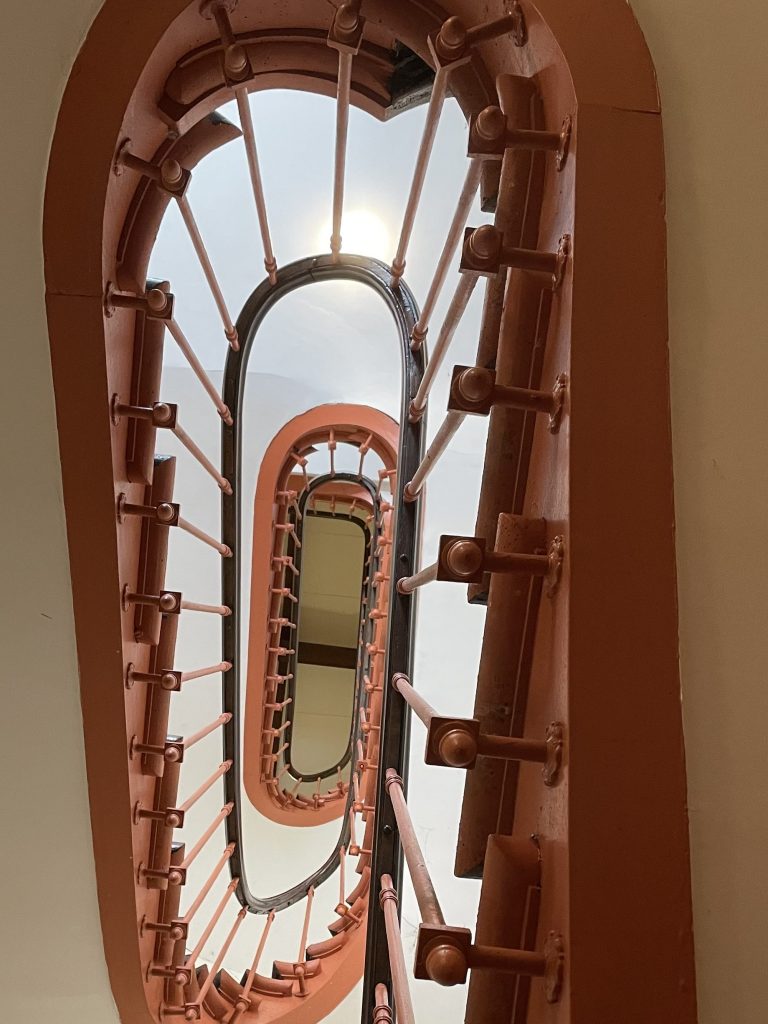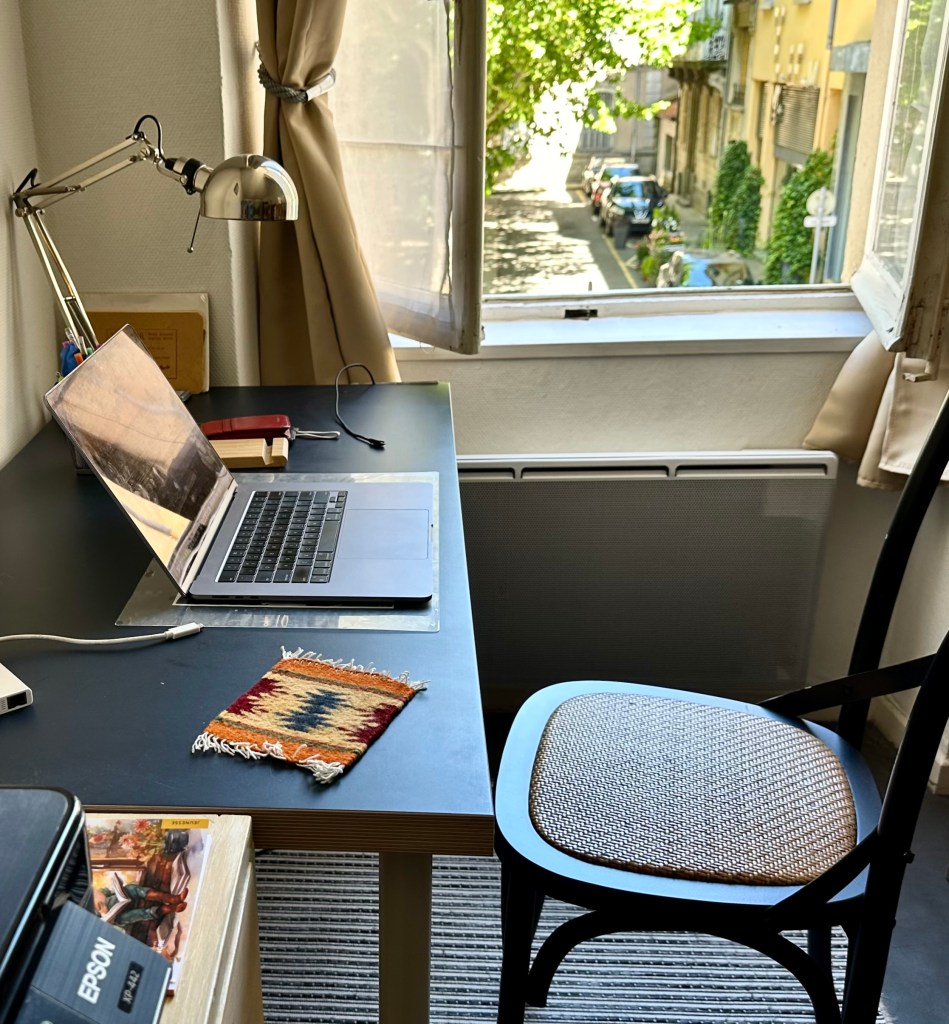Our Apartment: “Le Tassigny”
First off, I have to say that our apartment looks quite scruffy from the street. The front door has been through the wars (literally!), and the entrance hall can appear dim and unwelcoming.



But once you get inside you appreciate just how bright and luminous the living space is, with its tall windows and light colours. Having all the windows facing onto the square means that we are not shaded by buildings on the other side of the narrow street, as is so often the case in old towns like this. So the morning sun provides a bright start to the day, while at the same time we avoid the heat of the afternoon sun.









I don’t know how old our building is, but, whatever its age, I doubt it has any historic significance.
Most of the window panes are made of “old” glass, i.e. glass that was manufactured before the “plate glass” process was developed at the beginning of the 1900s. There is a certain charm in seeing the outside through “wavy” panes with occasional flaws in them, even though the distortions are minimal.
Like the glass, the tiles in the hallway and the main staircase seem to me to be from the 19th century, but it’s hard to say whether that was when the building was erected. It was revamped into the present condominium enterprise 40 years ago, but probably had contained apartments long before that.
The buildings on this old street are on a footprint that reaches back to 1355, when the town plan was simplified and the streets rebuilt after the Black Prince had burnt down the town in one of his armed raids (“chevauchées”) into the French countryside from the English stronghold of Gascony.
That is not to say that the current buildings date back to then, but parts of them certainly do. For example, parts of the restaurant just down the road (“Le Cathare”) dates from that time, as do some of the arches, stairs and courtyards of several neighbouring buildings. I even discovered what appears to be the lower part of a medieval archway at the base of this building, in the cupboard where the electric meters are hidden, but it was incorporated into much later construction.
The majority of the main buildings in the Bastide, however, were erected when the town had become very prosperous because of the textile industry in the seventeenth and eighteenth centuries, often replacing or incorporating older structures. After that, there was another burst of building later in the nineteenth century, when prosperity returned with new agri-industries and the coming of the railway.
So, it is hard to say when our building was put up, but I dare say its bones go back a long time, even if the flesh on them has been modified to suit the times that its inhabitants have lived in.
If you are interested in visiting Carcassonne and need somewhere to stay, then we invite you to check out our apartment on Airbnb.